What this tiny Swedish landrace breed lacks in size, it more than makes up for with boldness and charm. An exceptionally rare breed that has gained a cult following in the U.S.
| Item | 1+ | Quantity |
|---|---|---|
| Olandsk Dwarf Day-Old Chick Unsexed | 49.00 | |
| Olandsk Dwarf Eggs | 8.00 | Sold Out |
Giant pandas, viewed by most people as the very symbol of endangered animals, currently number about 2,500 adults in the wild. Take half that number –about 1,300 individuals—and you have the global population of blue whales. Halve that number again and you’re describing the remaining population of mountain gorillas; about 650 secretive apes living deep in the forests of Rwanda. But, mountain gorillas are almost common compared to the number of Olandsk Dwarfs –a beautiful little chicken from Sweden– remaining in the world. In 1989 there were 54 of these birds on the planet, and today their number can be measured in the hundreds.
Breed History
These avian rarities hail from Olands, the second largest island in Sweden; a strip of land about 85 miles long and 10 miles wide anchored near the mainland along the southeast coast. Here, centuries ago birds simply known as British garden hens (a literal translation of the Swedish word for this precursor landrace) were brought to the island, and from these birds the Olandsk Dwarf emerged as a distinct breed. Olandsk Dwarfs are relatively cold-hardy birds that lay smallish white eggs. Their feathers are a wild, splattered canvas drawing from a palette of red, black, white, and gray. Dwarfs are active foragers and socialize well in a flock. Typically their legs are clean however you may see some birds with slight feathering on their legs.
Appearance and Behavior
You will see various feather plumages in this breed. The most common appearance is white with a splattering of red, black, and gray. Some people refer to the pattern as flowered, which is either spangled (black-tipped) or mottled (white-tipped) depending on the bird. Normally they have pearl-colored legs but we have seen some birds with yellow legs and typically they have red earlobes. However, sometimes you will notice that the earlobes can be white and red. There is no strict standard on their appearance as they are a landrace but the framework for the landrace is the above-mentioned characteristics. They are typically no heavier than 3 pounds at maturity. Normally the roosters will weigh between 1.5 to 2.5 pounds and the hens will weigh around 1 pound. So, they are quite small birds!
The hens can be somewhat broody but we recommend investing in a good-quality incubator if you plan to hatch chicks. Not all Olandsk Dwarf hens should be expected to go broody. If you end up with a broody hen then you may be able to let her set and incubate her eggs naturally. The hens are also very good layers and typically in a young hen you will find that she will lay around 200 small, white eggs per year. After the hens are older than 3 years they will lay much fewer eggs. As is typical with most breeds. The hens and roosters are fairly easy to integrate with new birds. We haven't had many issues when adding in new birds, but we recommend that you supervise the interaction and integration of new birds for the first few days, just to make sure there are no major issues.
Viability is typically high, especially with young roosters. We have had good results with a rooster-to-hen ratio of about 1:10 but we think that one rooster could easily maintain high viability from a flock with up to 14 hens per 1 rooster. The roosters tend to be protective of the hens and will alert them to threats when they see them. We haven't experienced these roosters becoming aggressive toward humans.
It's also important to note that these birds are well-flighted and will happily and easily fly up to roost on the tallest perch or in trees if given the opportunity. They are very active and confident. Even though they are small, they don't seem to let them deter them from exploring their surroundings. Sometimes they are a little too confident, so keep that in mind when allowing them to free-range. These birds will do well in a small or large pen.
Breed Standard
You can read some information from a Swedish source for the Olandsk Dwarf by clicking here. As a reminder, this landrace doesn't have a set standard but a few points have been laid out to outline a simple framework.
Hatching Eggs
We incubate at 99.5F and 55% humidity. They tend to hatch well at about 75% from the eggs that were placed into the hatcher. Viability does seem to be higher in the spring and summer and lower during the fall and winter. You should expect to see a variety of chick colorations when the chicks hatch. We have noticed that some chicks that hatch end up with splay leg. Which is when the chick's legs essentially slip out from under them and they are doing a split. This can be corrected if you act quickly but using a splay leg band. This might be eliminated by using different hatching conditions than what we typically use.
Notes
Greenfire Farms has twice imported Olandsk Dwarfs; once in 2012 and again in 2014 from an unrelated bloodline. We love these tiny chickens with their bright colors and precise clockwork movements. They are friendly, fearless birds that are perfect for the space-constrained chicken hobbyist or for anybody who appreciates rarity and beauty in the poultry kingdom.
Shipping
Due to their variety in appearance, you may receive different colored chicks in your order. This is normal. Please view the picture on this page for an example of 2 different color patterns you will see on the day-old chicks. Also, due to their small size we will now ship these chicks as 1 week old chicks instead of day-old. The 72 hour guarantee will still apply to these 1 week old chicks.
Breed History
These avian rarities hail from Olands, the second largest island in Sweden; a strip of land about 85 miles long and 10 miles wide anchored near the mainland along the southeast coast. Here, centuries ago birds simply known as British garden hens (a literal translation of the Swedish word for this precursor landrace) were brought to the island, and from these birds the Olandsk Dwarf emerged as a distinct breed. Olandsk Dwarfs are relatively cold-hardy birds that lay smallish white eggs. Their feathers are a wild, splattered canvas drawing from a palette of red, black, white, and gray. Dwarfs are active foragers and socialize well in a flock. Typically their legs are clean however you may see some birds with slight feathering on their legs.
Appearance and Behavior
You will see various feather plumages in this breed. The most common appearance is white with a splattering of red, black, and gray. Some people refer to the pattern as flowered, which is either spangled (black-tipped) or mottled (white-tipped) depending on the bird. Normally they have pearl-colored legs but we have seen some birds with yellow legs and typically they have red earlobes. However, sometimes you will notice that the earlobes can be white and red. There is no strict standard on their appearance as they are a landrace but the framework for the landrace is the above-mentioned characteristics. They are typically no heavier than 3 pounds at maturity. Normally the roosters will weigh between 1.5 to 2.5 pounds and the hens will weigh around 1 pound. So, they are quite small birds!
The hens can be somewhat broody but we recommend investing in a good-quality incubator if you plan to hatch chicks. Not all Olandsk Dwarf hens should be expected to go broody. If you end up with a broody hen then you may be able to let her set and incubate her eggs naturally. The hens are also very good layers and typically in a young hen you will find that she will lay around 200 small, white eggs per year. After the hens are older than 3 years they will lay much fewer eggs. As is typical with most breeds. The hens and roosters are fairly easy to integrate with new birds. We haven't had many issues when adding in new birds, but we recommend that you supervise the interaction and integration of new birds for the first few days, just to make sure there are no major issues.
Viability is typically high, especially with young roosters. We have had good results with a rooster-to-hen ratio of about 1:10 but we think that one rooster could easily maintain high viability from a flock with up to 14 hens per 1 rooster. The roosters tend to be protective of the hens and will alert them to threats when they see them. We haven't experienced these roosters becoming aggressive toward humans.
It's also important to note that these birds are well-flighted and will happily and easily fly up to roost on the tallest perch or in trees if given the opportunity. They are very active and confident. Even though they are small, they don't seem to let them deter them from exploring their surroundings. Sometimes they are a little too confident, so keep that in mind when allowing them to free-range. These birds will do well in a small or large pen.
Breed Standard
You can read some information from a Swedish source for the Olandsk Dwarf by clicking here. As a reminder, this landrace doesn't have a set standard but a few points have been laid out to outline a simple framework.
Hatching Eggs
We incubate at 99.5F and 55% humidity. They tend to hatch well at about 75% from the eggs that were placed into the hatcher. Viability does seem to be higher in the spring and summer and lower during the fall and winter. You should expect to see a variety of chick colorations when the chicks hatch. We have noticed that some chicks that hatch end up with splay leg. Which is when the chick's legs essentially slip out from under them and they are doing a split. This can be corrected if you act quickly but using a splay leg band. This might be eliminated by using different hatching conditions than what we typically use.
Notes
Greenfire Farms has twice imported Olandsk Dwarfs; once in 2012 and again in 2014 from an unrelated bloodline. We love these tiny chickens with their bright colors and precise clockwork movements. They are friendly, fearless birds that are perfect for the space-constrained chicken hobbyist or for anybody who appreciates rarity and beauty in the poultry kingdom.
Shipping
Due to their variety in appearance, you may receive different colored chicks in your order. This is normal. Please view the picture on this page for an example of 2 different color patterns you will see on the day-old chicks. Also, due to their small size we will now ship these chicks as 1 week old chicks instead of day-old. The 72 hour guarantee will still apply to these 1 week old chicks.
| Egg Color | tinted |
| Egg Size | Small |
| Average number of eggs per year | 200 - 250 |
| Gamefowl | no |
| Cold tolerant | yes |
| Year of import(s) | 2012, 2014 |
| Landrace | Yes |
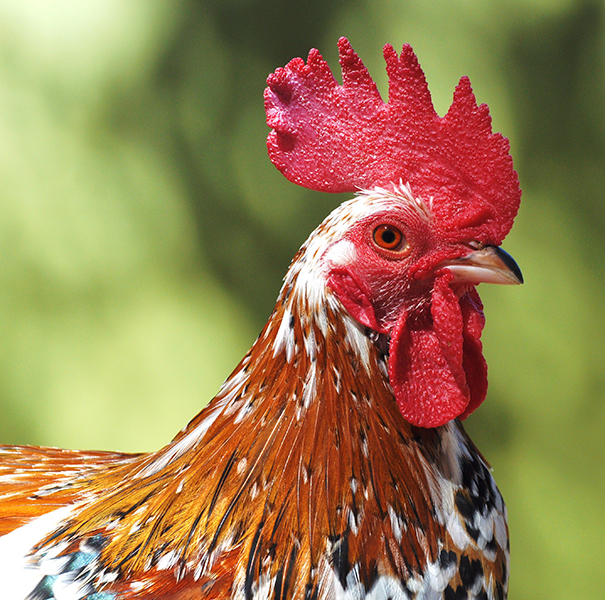

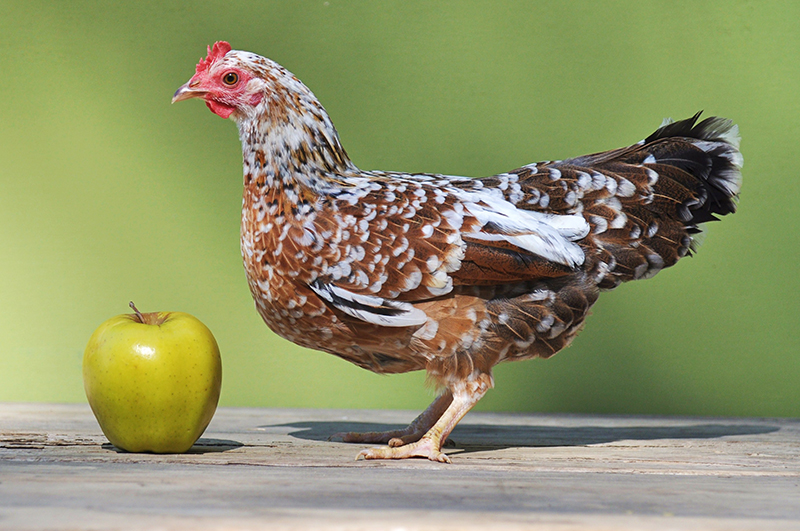
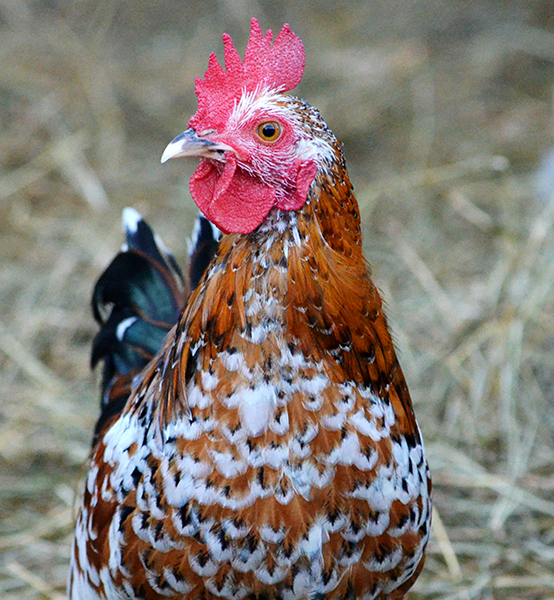
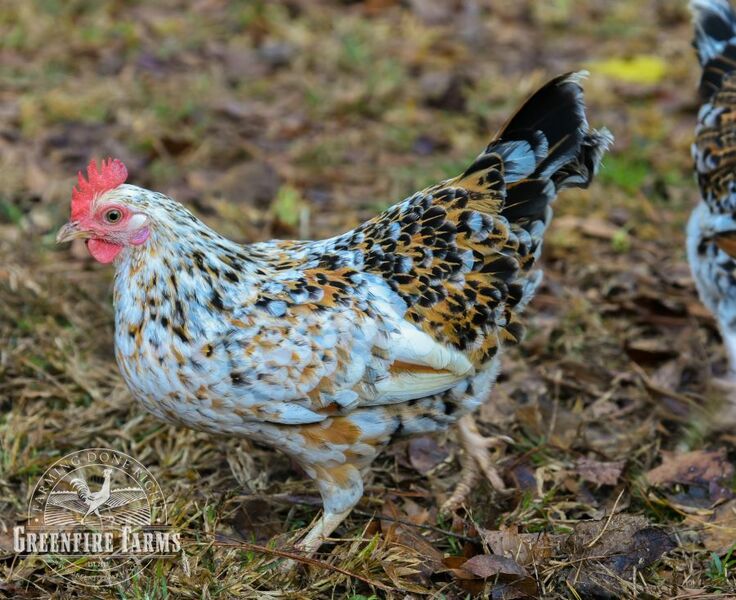
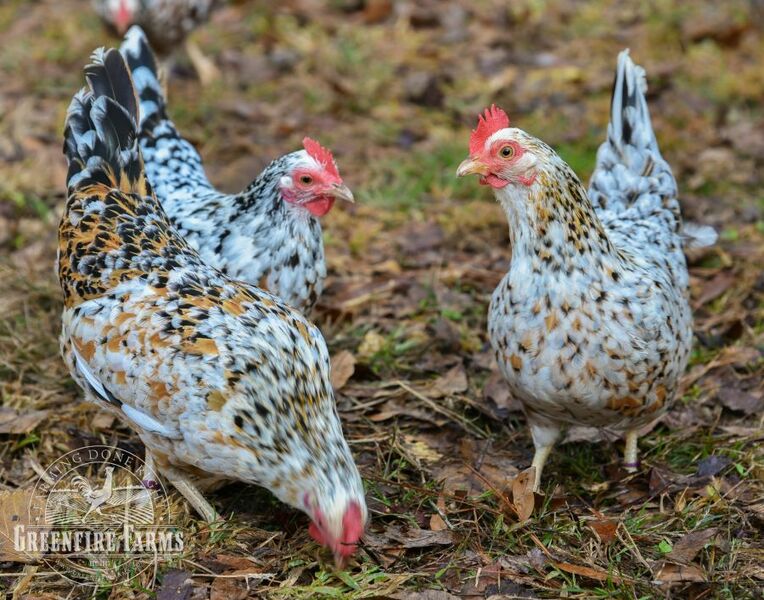
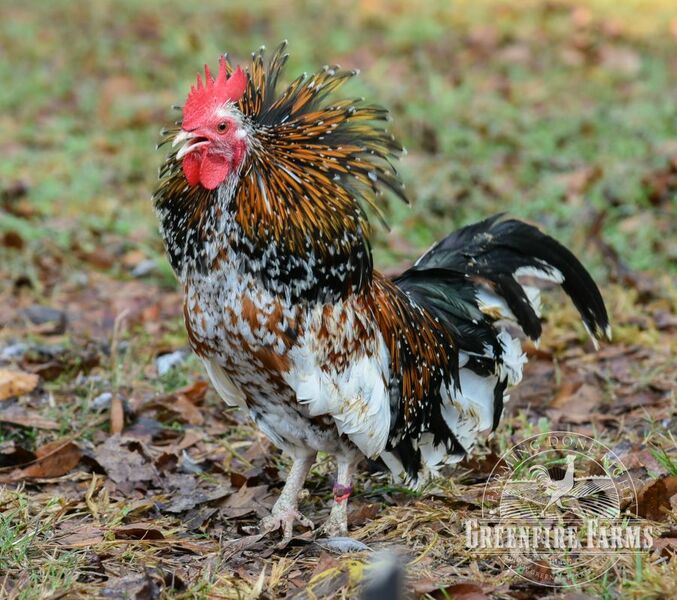

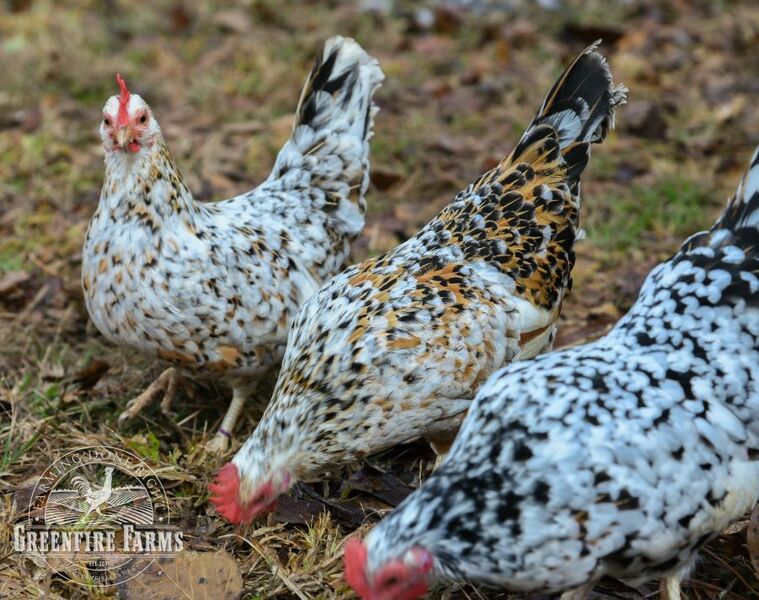

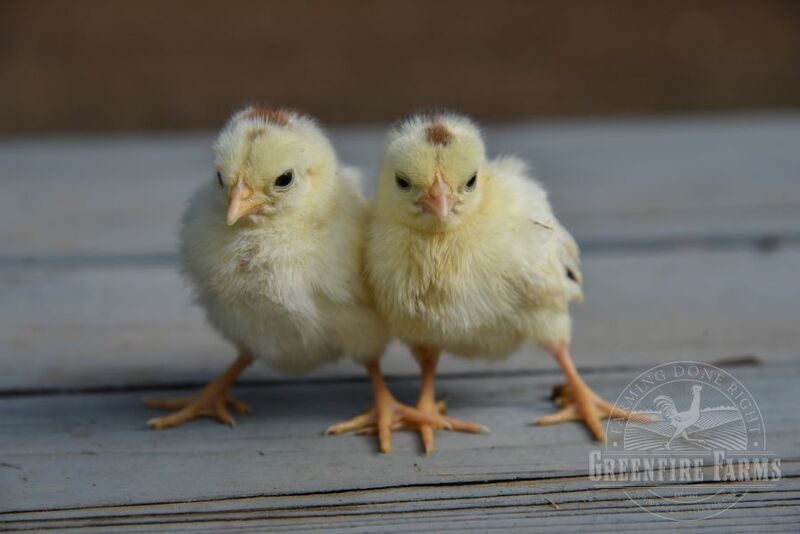
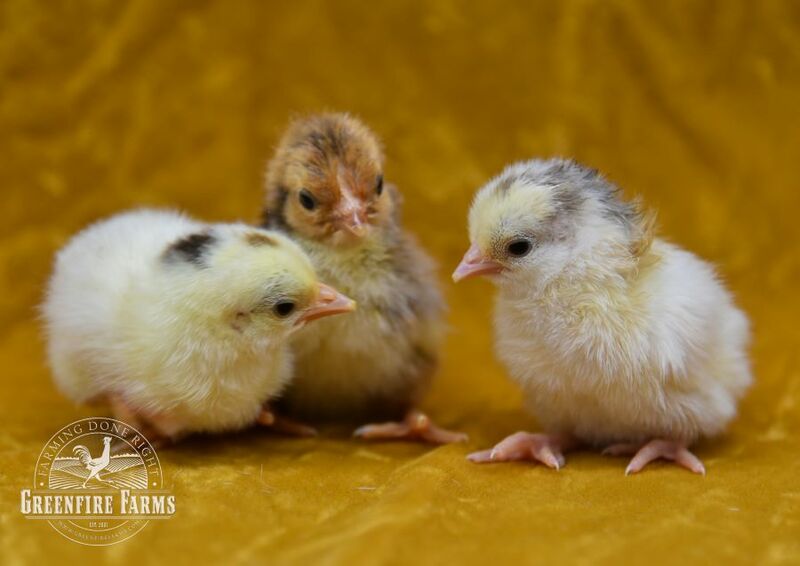
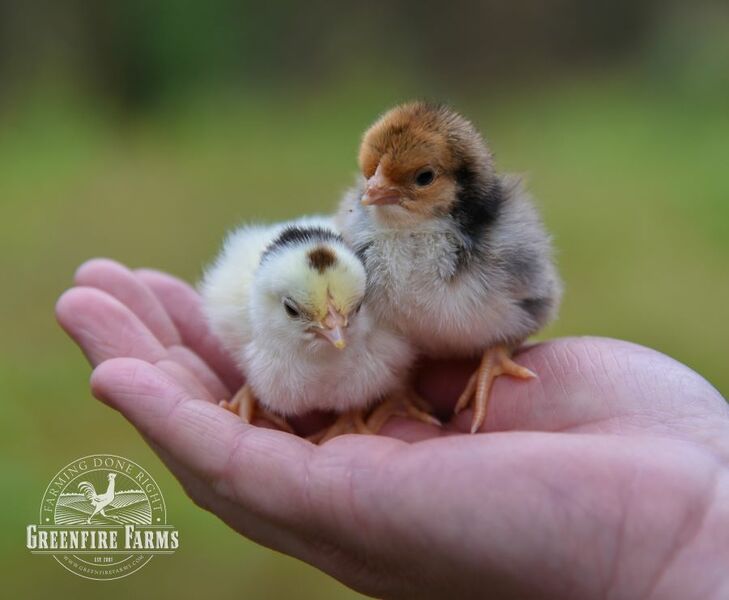
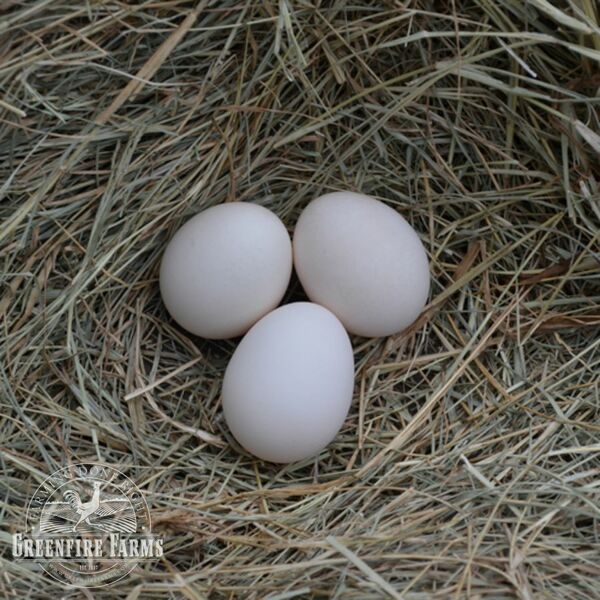

 Cart:
Cart: 

